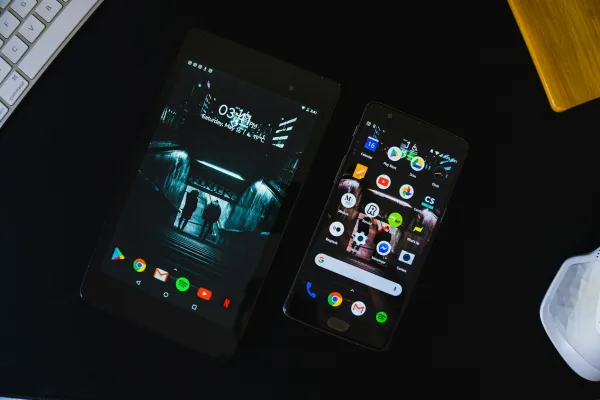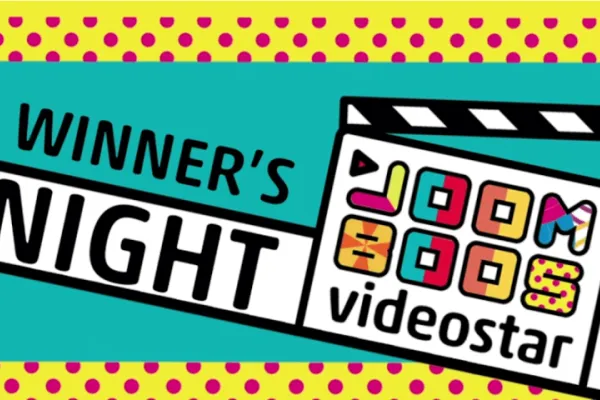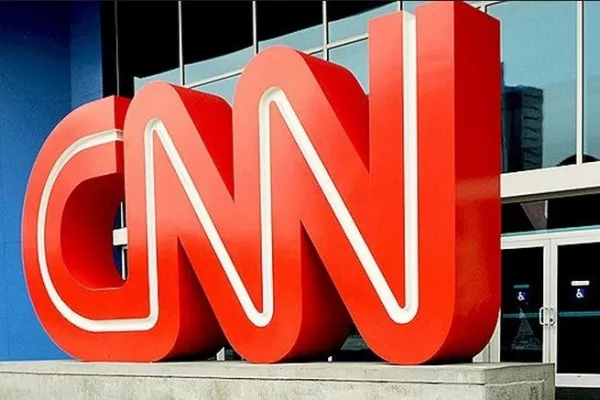
 Details
Details
With the majority of internet users accessing content on mobile devices, optimizing native ads for small screens is essential for driving engagement and conversions.
In this guide, we'll explore optimization strategies for native advertising campaigns on mobile devices, including responsive design, ad formats, and recommended image sizes and headline lengths for native ads on mobile.
READ MORE: New to Native Advertising? Start With Our Ultimate Guide
Rule Nr. 1: Don't Ever Forget Responsive Design!
One of the most critical aspects of mobile native advertising is ensuring that the mobile native ads are displayed correctly and seamlessly across various devices and screen sizes – don’t forget tablets!
Responsive design plays a crucial role in optimizing native ad performance on mobile devices.
By designing ads with flexible layouts and elements that adapt to different screen sizes, you can ensure a consistent and engaging user experience across all devices.
Native Ad Formats for Mobile
Mobile native advertising offers a variety of ad formats tailored to the unique characteristics of mobile devices.
Let's first take a look at some of the most popular native ad formats for mobile.
In the following section, we’ll share recommended specifications for mobile native ads, including native ad image sizes and recommended native ad headline lengths for the different types of mobile native ads.
READ MORE: All the Different Types and Formats in Native Advertising
Some of the mobile native ad formats below are only available through mobile-experiences while others can be used across different devices.
- In-Feed Social Media Ads: These ads seamlessly blend into users' social media feeds, providing a non-disruptive advertising experience.
- In-Feed Content Ads: Designed to match the style and format of surrounding content, these ads appear naturally within editorial feeds and streams.
- Recommendation Widgets: These widgets feature sponsored links and recommendations at the end of articles or content, driving traffic to related content.
- In-Map Ads: Location-based ads integrated into mobile maps, providing users with relevant information and directions.
- In-Game Ads: Opt-in ads that offer rewards to players for engaging with branded content within mobile games.
- Paid Search Ads: Ads displayed alongside organic search results on mobile search engines, providing users with relevant information and options.
READ MORE: Check Out the Best Native Advertising Platforms Right Now
Recommended Image Sizes for Mobile Native Ads
When it comes to mobile native advertising, selecting the right image sizes is essential for ensuring your ads appear compelling and visually appealing across various devices and platforms.
Let's explore the recommended image sizes for mobile native ads to optimize your campaigns for maximum campaign potential.
Let's start with recommended image sizes for in-feed social media ads on mobile:
- Mobile Ad Image Sizes For Facebook: Recommended image dimensions are typically 1200 x 628 pixels for single-image ads and 1080 x 1080 pixels for carousel ads. Ensure images are high-resolution and visually appealing to capture users' attention in the feed.
- Mobile Ad Image Sizes For Twitter: Images should ideally be 1200 x 675 pixels. Ensure images are of high quality to stand out in users' feeds.
- Mobile Ad Image Sizes For LinkedIn: Single image ads on LinkedIn typically have a recommended image size of 1200 x 627 pixels. Carousel ads on LinkedIn have an optimal image size of 1080 x 1080 pixels. High-quality images are essential to grab the attention of professionals scrolling through their LinkedIn feeds.
READ MORE: How Much Does Native Ads Really Cost? Find Out!
And now let's take a look at in-feed content ads on mobile:
Image sizes for in-feed content ads should align with the layout and dimensions of the editorial feed or platform. Always stay up to date with platform-specific guidelines for image dimensions and aspect ratios to ensure images display correctly and enhance the overall user experience.
- Mobile Ad Image Sizes For Outbrain: Image specifications for Outbrain native ads may vary depending on the specific campaign requirements and placements. However, a common recommendation is to use images with dimensions of 1200 x 800 pixels. Ensure images are clear, relevant, and engaging to entice users to click on your content.
- Mobile Ad Image Sizes For Taboola: Taboola recommends using images with minimum dimensions of 800 x 600 pixels for their native ad placements. High-quality, visually appealing images are crucial for attracting clicks and driving engagement on Taboola's network.
Image Sizes for Other Types of Mobile Native Ads
- In-Map Ads: Images in in-map ads should be clear and relevant to the location or business being promoted. While there are no specific size requirements for in-map ads, use high-quality images that are easily recognizable and informative for users navigating the map.
- In-Game Ads: When incorporating images into in-game ads, consider the dimensions and resolution that best suit the game environment and user interface. Test different image sizes and formats to determine the most engaging visuals for your target audience.
- Paid Search Ads: Image sizes are not applicable for traditional paid search ads, which typically consist of text-based headlines and descriptions. Focus on crafting compelling ad copy that resonates with users and entices them to click through to your website or landing page.
READ MORE: How to Spot Native Advertising

Photo: Ensure your entire user journey is responsive on all devices. Otherwise you'll be wasting your budget.
What Is the Recommended Headline Length for Mobile Native Ads?
Crafting the perfect native ad headline is an important aspect of creating effective mobile native ads. Headlines serve as the first point of contact with your audience, enticing them to engage further with your content.
But how long should your headlines be to capture attention and convey your message effectively? We'll guide you in the right direction below.
Recommended Headline Length for Native In-Feed Social Media Ads
Aim for concise and attention-grabbing headlines that convey the main message or offer within 25-40 characters. Short, punchy headlines tend to perform well in social media feeds and attract users' interest.
Recommended Headline Length for Native In-Feed Content Ads Such as Taboola & Outbrain
Headlines for in-feed content ads such as Taboola, Outbrain, and Nativo should be descriptive and engaging, encouraging users to click and explore further.
Keep headlines under 70 characters to ensure they display effectively on mobile devices and capture users' attention amidst other content.
Recommended Headline Length for In-Map Ads
Due to space limitations on mobile maps, keep headlines brief and to the point, ideally between 20-30 characters. Focus on highlighting key information such as the business name, offer, or call-to-action to prompt users to take action.
Recommended Headline Length for In-Game Ads
Headlines in in-game ads should be concise and relevant to the context of the game. Aim for headline lengths of 20-35 characters to ensure they are easily readable and impactful within the game interface.
Recommended Headline Length for Paid Search Ads
Craft compelling headlines for paid search ads that accurately reflect the user's search query and offer a clear value proposition.
Keep headlines concise, typically between 25-30 characters, to maximize visibility and relevance in search results.
READ MORE: Native Advertising Terms: Your A-Z Glossary
Our 4 Top Tips to Native Advertising on Mobile
If you're completely new to native advertising on mobile, we won't leaving you hanging without giving you our top tips to creating meaningful and effective native ads – tailored to users on mobiles or tablets.
- Maintain Consistency: Ensure that headlines and content align with the overall tone and style of the platform or app where the native ads are displayed. Use language and imagery that resonate with the target audience and reflect the brand's identity.
- Provide Value: Offer users valuable and relevant information or incentives that address their needs or interests. Focus on highlighting unique selling points, promotions, or benefits to encourage engagement and clicks.
- Incorporate Call-to-Action (CTA): Include clear and compelling CTAs in headlines and ad copy to prompt users to take action, such as "Shop Now," "Learn More," or "Sign Up Today." Make CTAs stand out visually and position them strategically within the ad creative.
- Test and Iterate: Continuously test different headline lengths, image sizes, and ad formats to identify what resonates best with your target audience. Analyze performance metrics and adjust your native advertising strategy accordingly to optimize campaign effectiveness and ROI.
READ MORE: Best Practices for Programmatic Native Advertising
The Bottom Line
Optimizing native advertising campaigns for mobile devices requires careful attention to responsive design, ad formats, image sizes, headline lengths, and targeting options.
By following the tips outlined in this guide and staying informed about the latest trends and best practices in mobile advertising, you’ll be able to maximize the impact of your native ad campaigns on small screens.


